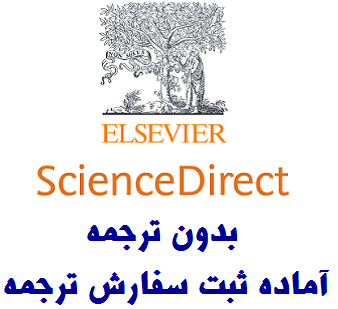
| عنوان فارسی مقاله | پیش بینی حذف طولانی مدت فلزات سنگین از روسازی های متخلخل برای تصفیه پساب |
| عنوان انگلیسی مقاله | Predicting long term removal of heavy metals from porous pavements for stormwater treatment |
| فهرست مطالب | Abstract ۱ Introduction ۲ Methods ۳ Results and discussion ۴ Conclusions References |
| نمونه مقاله انگلیسی | Abstract
Porous pavements are commonly used stormwater management systems. However, the understanding of their long-term capacity to retain heavy metals is limited. This study aims to investigate the longterm removal of heavy metals in three different porous pavements – Porous Asphalt (PA), Hydrapave (HP) and Permapave (PP) over accelerated laboratory experiments representing 26 years with varying hydrological conditions (drying/wetting periods and flow rates). A treatment model that simulates adsorption and desorption processes was developed for the first time to predict the long-term heavy metal removal by porous pavements. Unsurprisingly, all tested porous pavements performed better in removing metals that tend to attach to solid particles (e.g. Pb, Al, Fe) than more soluble ones (e.g. Cu, Zn, and Mn). There was a general increase of heavy metal concentrations at the outlet of the pavements over time as a result of a decrease in adsorption capacity of the systems, especially after the occurrence of clogging; the soluble heavy metals removal decreased with a reduction in flow rates which was speculated to be due to more time being available for desorption of metals and breakdown of accumulated sediments. The proposed model simulated the trend, fluctuations and peaks of heavy metal concentrations reasonably well, achieving the Nash-Sutcliffe coefficient (NSE) values of 0.53- 0.68 during model calibration. The model was most promising in predicting Al and Cu release from porous pavements (50%-91% of the observed data within the 90% uncertainty bands, NSE=0.44-0.74), followed by Fe and Pb (27-77% observations within the bands, NSE=0.20-0.69). Further improvements of the model are needed for it to be applicable for Zn and Mn. Introduction Due to the increase in impervious areas alongside rapid urbanisation, urban stormwater runoff and pollution have increased significantly (Goonetilleke et al., 2005;Zgheib et al., 2012). This causes adverse impacts not only on downstream water quality (Jeng et al., 2005), but also on stream health (Booth and Jackson, 1997). Meanwhile stormwater can also be an alternative resource if collected and treated properly. To manage stormwater issues in cities, a variety of techniques have been developed under the concept of Water Sensitive Urban Design (WSUD, also called Low Impact Development in USA, Sustainable Urban Drainage Systems in the UK, and Sponge City in China – Fletcher et al. (2015)). Porous pavements are one WSUD technology that can be easily retrofitted within dense urban areas, providing unique opportunities to infiltrate stormwater on site as source control measures without taking up space in urban landscape (Mullaney and Lucke, 2014). |
| سال انتشار | 2018 |
| ناشر | الزویر |
| مجله | تحقیقات آب – Water Research |
| کلمات کلیدی | مدل k-C *؛ مدل مبتنی بر فرآیند؛ گرفتگی؛ جذب؛ واجذب |
| کلمات کلیدی انگلیسی |
k-C* model; process-based model; clogging; adsorption; desorption |
| صفحات مقاله انگلیسی | 27 |
| مناسب برای رشته | محیط زیست، مهندسی عمران، شیمی |
| مناسب برای گرایش | آب و فاضلاب، شیمی تجزیه |
| توضحیات | این مقاله انگلیسی جدید بوده و تا کنون ترجمه نشده است. جهت ثبت سفارش ترجمه از لینکهای زیر استفاده نمایید. |
| دانلود مقاله انگلیسی | ○ دانلود رایگان مقاله انگلیسی با فرمت pdf (کلیک کنید) |
| سفارش ترجمه فارسی | ○ سفارش انجام ترجمه و تایپ این مقاله (کلیک کنید) |
| سایر مقالات این رشته | ○ مشاهده سایر مقالات رشته شیمی (کلیک کنید) |